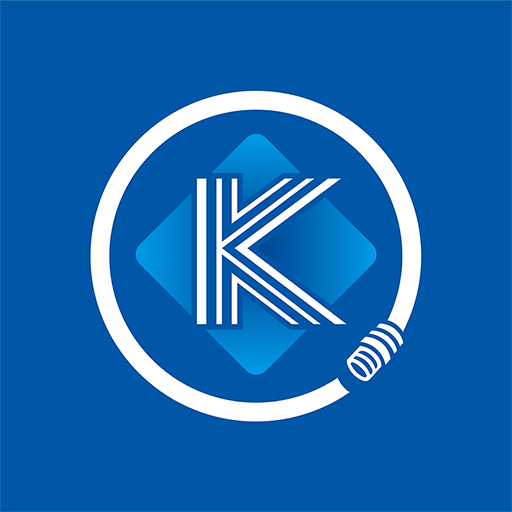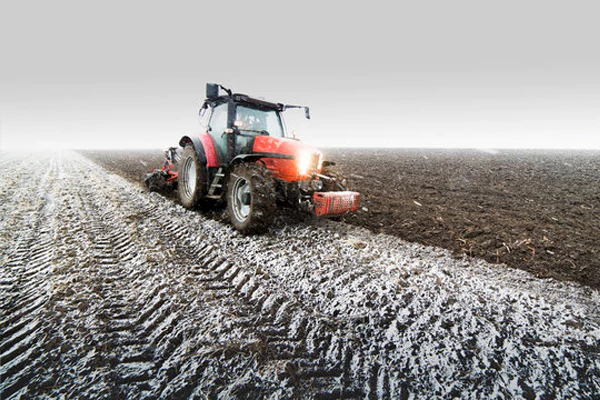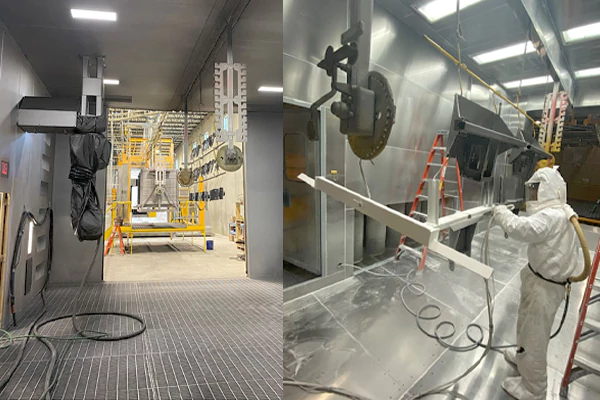PTFE hoses are a vital solution for industries where reliability and resistance to extreme conditions are critical. This guide provides a comprehensive overview of these high-performance components, from their unique material properties to their wide-ranging applications in chemical, automotive, and other demanding fields.
Understanding the difference between a standard hose and a high-quality PTFE hose is crucial for safety and efficiency. This ultimate guide will walk you through the key features, construction types, and benefits of PTFE hoses, helping you make an informed decision for your next project.
What is PTFE Hose?
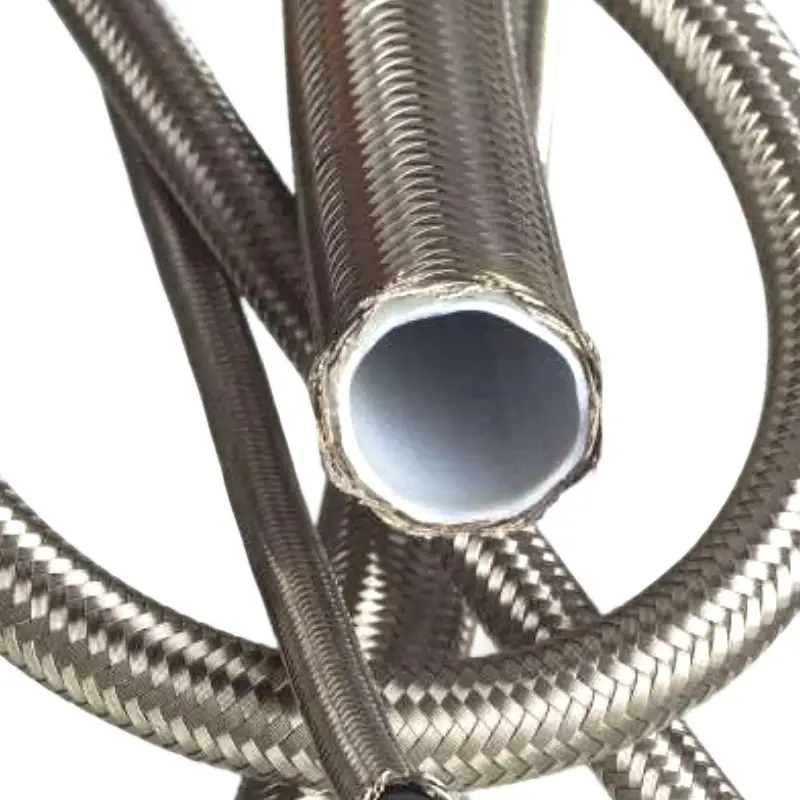
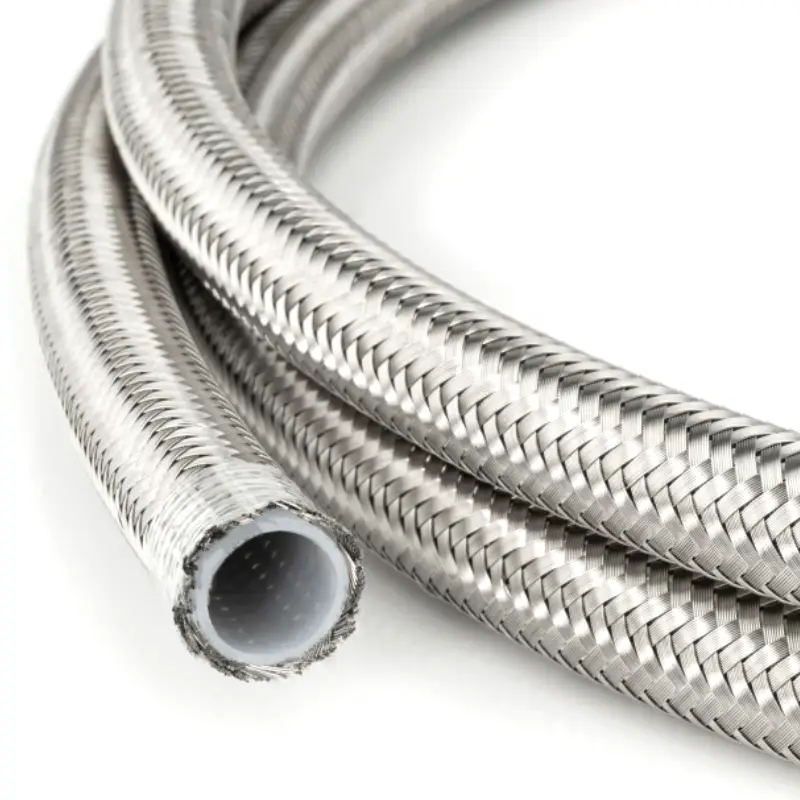
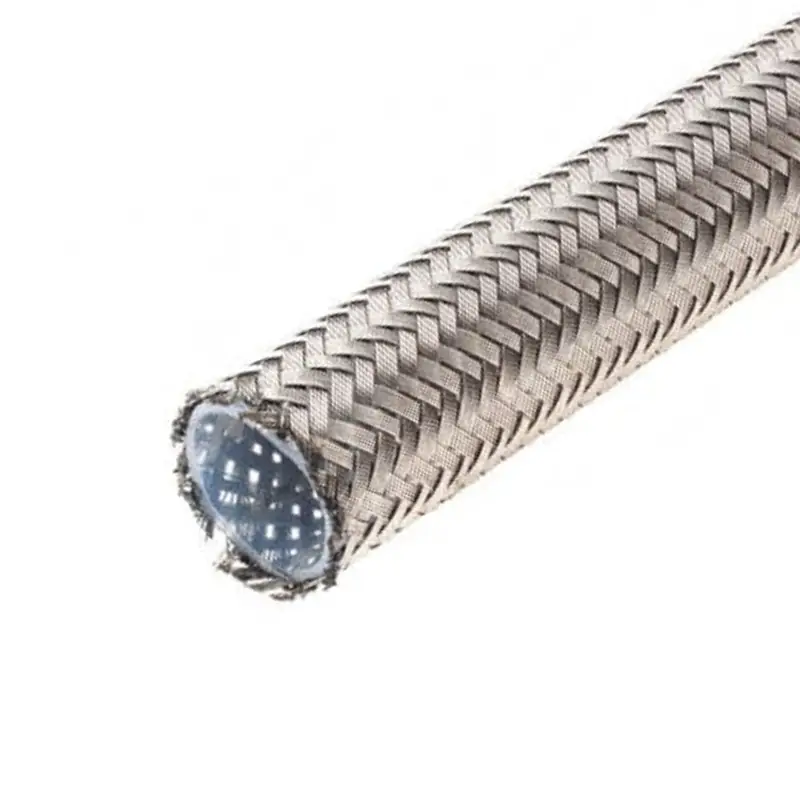
A PTFE hose is a type of industrial hose with an inner core made from PTFE (Polytetrafluoroethylene), a synthetic fluoropolymer commonly known by the brand name Teflon. This core is typically reinforced with an outer layer of braided stainless steel or synthetic fiber. The defining characteristics of a PTFE hose are its exceptional chemical and heat resistance.
The PTFE inner core is highly inert, making it compatible with a vast range of aggressive chemicals, acids, and solvents that would degrade other types of rubber or plastic hoses. Its smooth, non-stick surface also prevents material buildup, ensuring a clean and consistent flow. The outer braided layer provides the necessary strength to withstand high pressures, making the hose incredibly durable and reliable for demanding applications in industries such as chemical manufacturing, aerospace, and food processing.
What is PTFE Hose Made of?
A PTFE hose is primarily composed of two main materials, each serving a critical function to ensure the hose’s performance and durability. The combination of these materials gives the hose its unique properties, allowing it to excel in demanding environments where other hose types would fail.
- Inner Core: The innermost layer is made from PTFE (Polytetrafluoroethylene). This material is chosen for its superior chemical inertness, high-temperature resistance, and non-stick surface. It acts as the primary barrier for the fluid being transferred, ensuring no reaction or contamination occurs.
- Outer Reinforcement: The outer layer is typically a braided material that provides the hose with its structural integrity and pressure rating. The most common reinforcement is stainless steel wire (e.g., 304 or 316 grade), which offers excellent strength and resistance to corrosion. For applications requiring more flexibility or a lighter weight, textile braiding may also be used.
What is PTFE Hose Used for?
A PTFE hose is primarily used for transferring a wide variety of fluids, gases, and chemicals in applications where exceptional chemical resistance, a broad temperature range, and a non-stick surface are required. Its unique properties make it a superior choice over traditional rubber or plastic hoses in demanding environments.
- Chemical Transfer: Transporting highly corrosive chemicals, acids, bases, and solvents in chemical plants, laboratories, and processing facilities.
- Automotive: Serving as high-performance lines for fuel, brake fluid, and power steering fluid that must withstand high pressure, high temperatures, and various aggressive media.
- Food and Beverage Processing: Transferring food products, beverages, and dairy, where its non-porous and non-stick properties prevent bacterial growth and cross-contamination.
- Pharmaceutical and Medical: Employed in the manufacturing of pharmaceuticals and for medical equipment where cleanliness and non-reactivity with sensitive media are critical.
- Aerospace: Used in aircraft hydraulic and fuel systems, where their lightweight construction, durability, and resistance to temperature extremes are essential.
How to Choose Suitable PTFE Hoses?
Choosing a suitable PTFE hose requires careful consideration of several key factors to ensure it meets the specific demands of the application. Selecting the right hose is crucial for safety, system efficiency, and long-term durability.
- Chemical Compatibility: The first and most important factor is confirming that the PTFE inner core is compatible with the fluids being transferred. While PTFE is highly inert, some specialized chemicals may require a specific grade or alternative material.
- Pressure and Temperature Ratings: You must choose a hose with a working pressure and burst pressure rating that exceeds the maximum pressure of your system. Similarly, the hose must be able to withstand the full range of temperatures it will be exposed to, from the fluid itself to the surrounding environment.
- Hose Dimensions: The inner diameter (ID) must be correctly sized to maintain the required flow rate. An ID that is too small can lead to pressure drop, while one that is too large can affect the system’s efficiency and cost. The length must also be sufficient for proper routing without kinking or stressing the connections.
- Reinforcement Type: The outer reinforcement layer should be chosen based on the application’s pressure requirements and environment. Stainless steel braiding is ideal for high-pressure and abrasive conditions, while a textile braid offers a lighter and more flexible option for lower-pressure uses.
- Static Dissipation: If the hose will be used to transfer non-conductive fluids (like fuel or solvents), it’s essential to choose an anti-static (carbon-lined) PTFE hose. This prevents static buildup that could lead to sparks and potential explosions.
- End Fittings: The type of end fittings must be compatible with the connections on your equipment. Common options include NPT, JIC, and various flange types, and the fitting material (e.g., 316 stainless steel) should also be chemically compatible with the fluid.
Conclusion
In summary, PTFE hoses are the gold standard for applications requiring resistance to extreme temperatures, corrosive chemicals, and high pressures. Their unique non-stick and durable construction ensures clean fluid transfer and a long service life, making them an invaluable investment for any system where reliability is non-negotiable.
For any business that depends on the safe and efficient transfer of critical fluids, selecting the right hose is paramount. The integrity of your operations, safety of your personnel, and quality of your final product all hinge on the performance of your components. Don’t risk failure with inferior products.
For all your wholesale PTFE hose needs, look no further than Kingdaflex. We are committed to providing expertly-engineered, high-quality hoses that meet the toughest industry standards. Partner with us to ensure your operations run smoothly and safely with our durable and reliable PTFE hose solutions.

